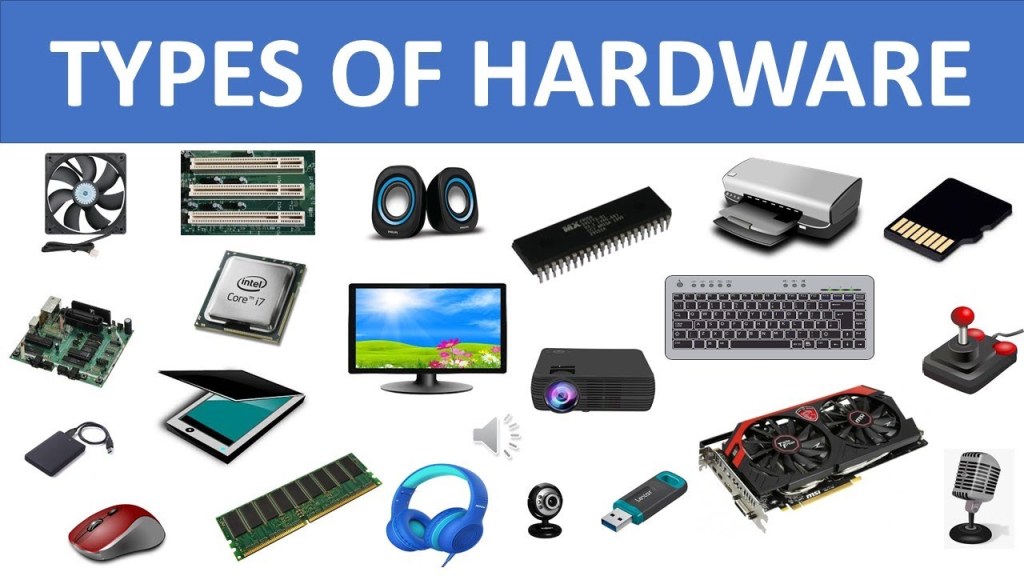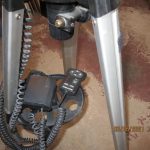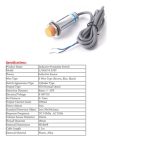Unlocking The Power: Explore The Two Types Of Computer Hardware In This Ultimate Guide!
Computer Hardware 2 Types
Welcome, Readers! In this article, we will explore the world of computer hardware and discuss the two main types of computer hardware. As technology advances, understanding the different components of a computer becomes increasingly important. So, let’s dive into the fascinating world of computer hardware and discover the two types that are crucial for every computer.
Introduction
Computers are an integral part of our lives, and we rely on them for various tasks. Whether it’s for work, entertainment, or communication, understanding the different types of computer hardware is essential. Computer hardware refers to the physical components of a computer system that enable it to function. These components can be broadly categorized into two types: internal hardware and external hardware.
1 Picture Gallery: Unlocking The Power: Explore The Two Types Of Computer Hardware In This Ultimate Guide!

Internal hardware refers to the components that are housed inside the computer case. These components include the motherboard, central processing unit (CPU), random access memory (RAM), hard disk drive (HDD), and graphics card. On the other hand, external hardware includes devices that are connected to the computer externally, such as monitors, keyboards, mice, printers, and speakers.
In this article, we will delve deeper into the two types of computer hardware, exploring their functionalities, advantages, and disadvantages to provide you with a comprehensive understanding of these essential components.
Internal Hardware
Motherboard

Image Source: ytimg.com
The motherboard is the main circuit board in a computer that connects all the internal components. It provides power and facilitates communication between different hardware components, such as the CPU, RAM, and storage devices. The motherboard plays a crucial role in determining the overall performance and compatibility of a computer system.
CPU
The central processing unit, or CPU, is often referred to as the brain of the computer. It performs all the calculations and executes instructions, making it the most critical component of a computer system. The CPU’s speed and processing power significantly impact the overall performance of the computer.
RAM
Random access memory, or RAM, is a type of computer memory that temporarily stores data that the CPU needs to access quickly. It allows for faster data retrieval and multitasking capabilities. The amount of RAM in a computer affects its ability to run multiple programs simultaneously and handle resource-intensive tasks.
HDD
A hard disk drive, or HDD, is a storage device that stores and retrieves digital information using magnetic storage. It provides long-term storage for the operating system, software applications, and user data. HDDs are known for their large storage capacity but slower read and write speeds compared to solid-state drives.
Graphics Card
A graphics card, also known as a video card or GPU, is responsible for rendering images, videos, and animations on the computer’s monitor. It offloads the graphical processing from the CPU, allowing for smoother graphics and better gaming performance. Graphics cards are particularly important for tasks that require high-resolution visuals, such as gaming and graphic design.
External Hardware
Monitors
Monitors are output devices that display visual information generated by the computer. They come in various sizes and resolutions, allowing users to view and interact with the computer’s graphical interface.
Keyboards
A keyboard is an input device that allows users to input text, commands, and other instructions into the computer. It consists of a set of keys, including letters, numbers, symbols, and additional function keys.
Mice
A mouse is an input device that allows users to move a cursor on the computer screen and interact with graphical user interfaces. It typically consists of a palm-sized device with buttons and a scrolling wheel.
Printers
A printer is an output device that produces hard copies of digital documents or images. It can be connected to a computer via a cable or wirelessly, and it comes in various types, such as inkjet, laser, and 3D printers.
Speakers
Speakers are output devices that produce sound generated by the computer. They allow users to listen to audio files, watch videos with sound, and engage in multimedia activities.
What, Who, When, Where, Why, and How of Computer Hardware 2 Types
What
Computer hardware consists of internal and external components that enable a computer to function. Internal hardware includes the motherboard, CPU, RAM, HDD, and graphics card, while external hardware includes monitors, keyboards, mice, printers, and speakers.
Who
Computer hardware is used by individuals, businesses, educational institutions, and government organizations. It is an indispensable part of modern society and is utilized by people from all walks of life.
When
Computer hardware has been evolving since the inception of computers. The advancements in technology have led to more powerful and efficient hardware components, enabling faster processing, increased storage capacity, and improved user experience.
Where
Computer hardware is used worldwide and can be found in various settings, including homes, offices, schools, hospitals, research facilities, and entertainment venues.
Why
Computer hardware is essential for performing various tasks, such as word processing, web browsing, gaming, multimedia production, data analysis, and scientific research. Without hardware components, computers would not be able to function.
How
Computer hardware is manufactured by specialized companies that design, produce, and distribute the components. These components are then assembled to create a computer system, either by the manufacturers or individual users.
Advantages and Disadvantages of Computer Hardware 2 Types
Advantages
1. Internal hardware enables faster data processing and multitasking capabilities, improving overall computer performance.
2. External hardware provides input and output capabilities, allowing users to interact with the computer and produce tangible outputs.
3. Computer hardware advancements have led to increased storage capacity, faster processing speeds, and enhanced graphics capabilities.
4. Hardware components can be upgraded and replaced, allowing users to adapt their computer systems to meet changing needs and technological advancements.
5. The availability of a wide range of hardware options allows users to customize their computer systems based on their specific requirements.
Disadvantages
1. Upgrading hardware components can be costly, especially for high-end components.
2. Hardware compatibility issues may arise when trying to upgrade or replace components, leading to system instability or limited functionality.
3. Hardware failures can occur, resulting in data loss or system malfunctions.
4. External hardware devices, such as printers and scanners, require additional space and may contribute to cluttered workspaces.
5. The rapid pace of hardware advancements may render older components obsolete, requiring frequent upgrades to keep up with the latest technology.
FAQs (Frequently Asked Questions)
1. What is the difference between internal and external computer hardware?
Internal hardware refers to components housed inside the computer case, such as the motherboard, CPU, RAM, HDD, and graphics card. External hardware includes devices connected externally, such as monitors, keyboards, mice, printers, and speakers.
2. Can I upgrade my computer’s hardware?
Yes, most hardware components can be upgraded or replaced, allowing you to improve your computer’s performance or adapt it to meet changing needs. However, compatibility and cost considerations should be taken into account.
3. How do I choose the right hardware components for my computer?
When selecting hardware components, consider your specific needs, such as the intended use of the computer, budget, compatibility with existing components, and future upgradability. Researching and consulting experts can help you make informed decisions.
4. What are the common signs of hardware failure?
Hardware failure can manifest in various ways, such as system crashes, slow performance, unusual noises from the computer, overheating, and failure to power on. If you suspect hardware failure, it is advisable to seek professional assistance.
5. How can I prolong the lifespan of my computer hardware?
To prolong the lifespan of your computer hardware, ensure proper ventilation and cooling, regularly update drivers and firmware, protect against power surges with a surge protector, avoid physical damage, and practice safe handling and storage.
Conclusion
In conclusion, understanding the two types of computer hardware, internal and external, is crucial for anyone using a computer. Internal hardware components, such as the motherboard, CPU, RAM, HDD, and graphics card, enable the computer to function effectively and efficiently. On the other hand, external hardware, including monitors, keyboards, mice, printers, and speakers, allows users to interact with the computer and produce tangible outputs.
By familiarizing yourself with computer hardware, you can make informed decisions when purchasing, upgrading, or troubleshooting your computer system. The advancements in computer hardware have revolutionized the way we work, communicate, and entertain ourselves. So, take a closer look at your computer and explore the possibilities that different hardware components offer.
Final Remarks
As technology continues to advance, the world of computer hardware will continue to evolve. It is important to stay updated with the latest hardware trends and advancements to make the most out of your computer system. Whether you are a professional, student, or casual user, understanding computer hardware is essential in today’s digital age. So, embrace the world of computer hardware and unlock the full potential of your computer!
This post topic: Electronics

